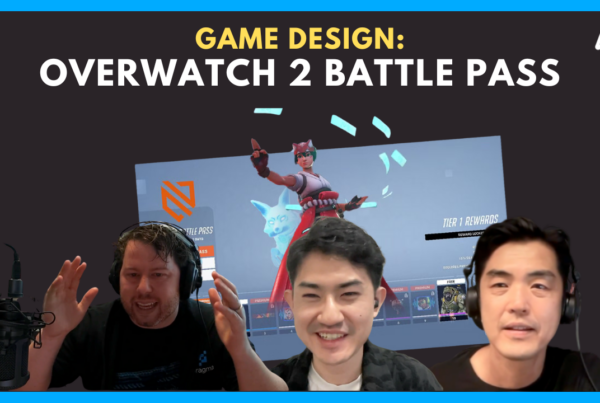📝 In an industry where development costs have skyrocketed, and market success has become increasingly challenging, understanding the true drivers of successful game development has never been more crucial. In this discussion with Ben Carcich from Building Better Games, we highlight the counter-intuitive patterns of success and practical frameworks for modern game development leadership.
Key Focus Areas:
- Why the most successful games often emerge from the most visibly challenging development processes
- How premature scaling and avoiding uncertainty doom projects before launch
- Critical success patterns observed across successful game projects
- Practical approaches to balancing creative vision, technical execution, and business reality
”If you have low comfort with uncertainty, I hope you’re working on like a sequel somewhere or a live service game, because if you’re doing anything new, you’re going to be in a lot of trouble.
Ben CarcichPrincipal, Building Better Games
🎮 Game Development Reality Check: Key Insights from Industry Veterans
In this discussion, I speak with Ben Carcich (Building Better Games), who reveals critical insights about why game projects succeed or fail in today’s environment.
Here’s a strategic analysis of the key takeaways:
🔑 Core Industry Challenges
Cost vs. Revenue Dynamics
- Game development costs have added “a digit” compared to 15 years ago
- Revenue per player hasn’t increased proportionally
- AAA games that previously cost $30-40M now cost $150-400M
- Even successful games now deliver 2-5x returns vs. historical 10-100x
Production Scale Issues
- Studios scale too quickly before validating core gameplay
- Large teams (100+ people) working without functional core loops
- Harder to pivot with larger teams – “Are you a dinghy or the Titanic?”
💡 Success Patterns & Characteristics
1. Vision & Alignment
- Clear game vision must be understood by entire team
- Leadership needs to resolve uncertainty, not deny it
- Avoid “rush to production” before core elements are validated
2. Team Dynamics & Culture
- Most successful projects often had the most visible conflicts/challenges
- Teams that surface and address problems tend to succeed
- Studios that hide issues typically launch with those problems unresolved
3. Focus & Prioritization
- Successful studios ruthlessly prioritize biggest issues first
- Even successful games launch with hundreds of smaller problems
- Key is solving the most impactful issues vs. trying to fix everything
🚨 Warning Signs
Leadership Red Flags
- Low comfort with uncertainty
- Pretending uncertainty doesn’t exist
- Focusing on asset completion vs player experience
- Over-reliance on planning vs prioritization
Production Red Flags
- Scaling team size before core gameplay validation
- Unable to clearly articulate what game you’re making
- Obsession with visual fidelity over player experience
- Arbitrary deadlines driving key decisions
💭 Strategic Implications
- Process Evolution
- Plans should focus on prioritization over rigid scheduling
- Processes need regular evaluation and updating
- Avoid becoming a “slave to the process”
- Resource Management
- Consider smaller, more focused teams until core gameplay is proven
- Evaluate true need for large team sizes
- Balance between innovation and execution capability
- Culture Development
- Create an environment where surfacing problems are encouraged
- Build a culture of addressing the biggest challenges first
- Maintain focus on player experience over production metrics
🎯 Key Takeaways
The most successful game studios don’t necessarily have the smoothest development process or the biggest budgets. Instead, they’re the ones that:
- Maintain clear vision
- Address problems directly
- Focus on player experience
- Manage uncertainty effectively
- Scale thoughtfully
Success in modern game development requires balancing creative vision, technical execution, and business reality while maintaining the courage to address problems head-on.
🗣️ Key Quotes & Insights
Ben Carcich’s Top 5 Strategic Insights
- “If you have low comfort with uncertainty, I hope you’re working on like a sequel somewhere or a live service game, because if you’re doing anything new, you’re going to be in a lot of trouble.”
- “Ideas are waste… I cannot ship ideas. I can only ship what I make… You have to pick, and you should pick based on your environment.”
- “The military gave me a lot of learning loops… How many cycles of leadership do you get? The military gave me a whole ton. I don’t think we get a ton of leadership cycles in game development.”
- “We focused heavily on craft quality, individual craft quality… there was a strong focus on visual fidelity… If the fundamental game isn’t any good, it doesn’t matter how pretty it is.”
- “The iteration loop is no longer as awful as when every studio is relying on a proprietary set of tools… You can get so much speed and learning from doing something in a non-ideal setting.”
Joseph Kim’s Top 5 Strategic Insights
- “On teams that actually achieved success… the pattern I’ve seen is that the game projects with the most problems, where people were yelling and screaming at each other, where people had to be let go, where there were so many issues and problems – those were the most successful games.”
- “Even the game studios where we had a lot of success, we had hundreds of problems… it’s not actually your ability to solve every problem in the game studio; it’s your ability to solve the biggest problems that are actually going to move the needle.”
- “When you look at our industry, I am probably more optimistic in terms of the number of opportunities than I have ever been before… there’s so much space for innovation in games and game genres.”
- “Working with a lot of game studios, I do think that a hardcore work ethic has outperformed… the probability of a successful outcome I felt was dramatically higher.”
- “The teams that have worked together for four plus years have dramatically higher probability of success, as well as the teams that generally have focus, that aren’t doing like 10 different games.”
Would love to hear your thoughts and experiences. What patterns have you observed in successful vs struggling game projects?
Discover more from Joseph Kim
Subscribe to get the latest posts sent to your email.






